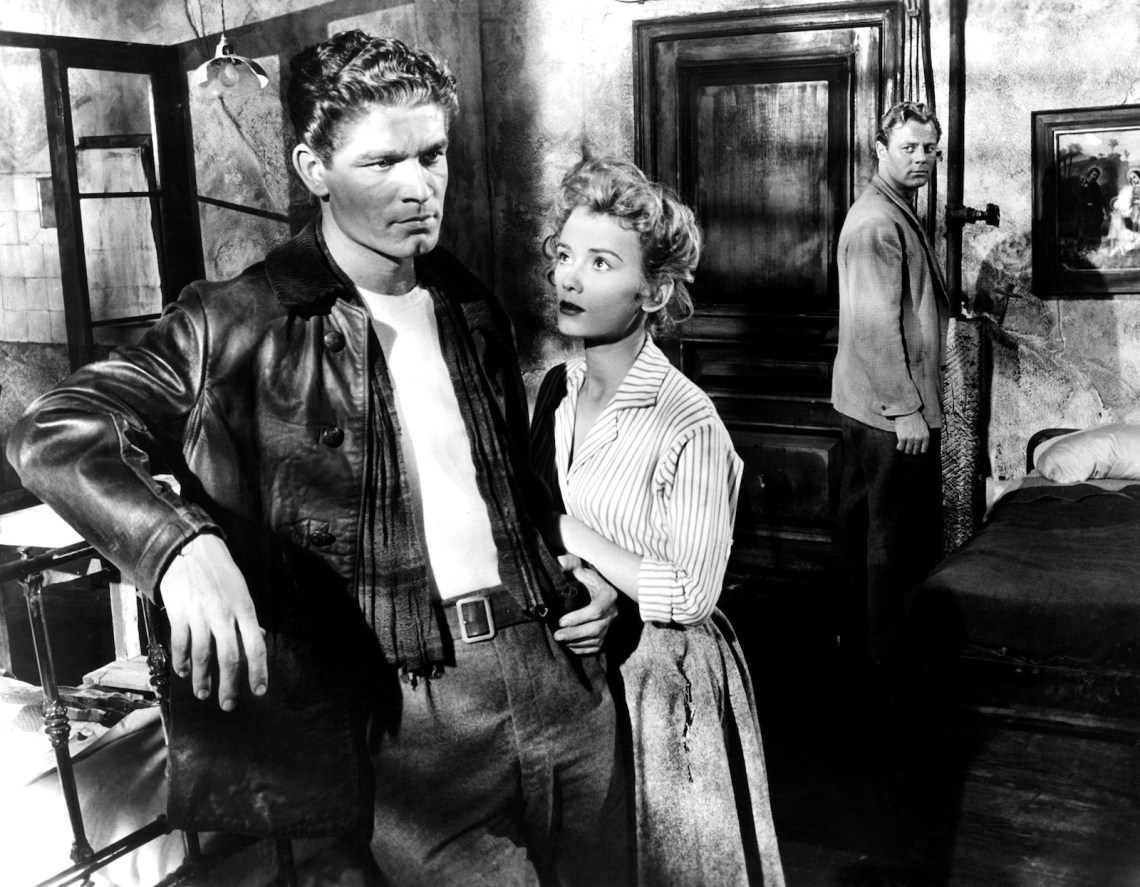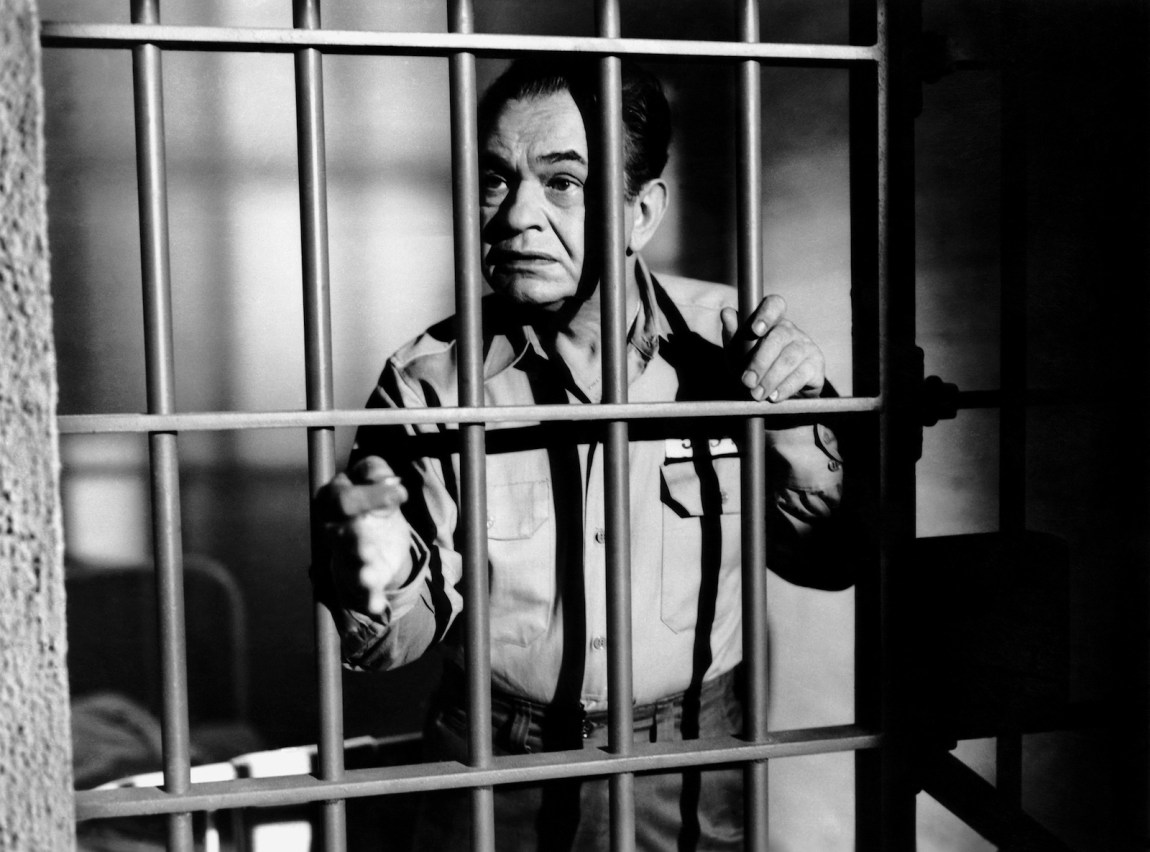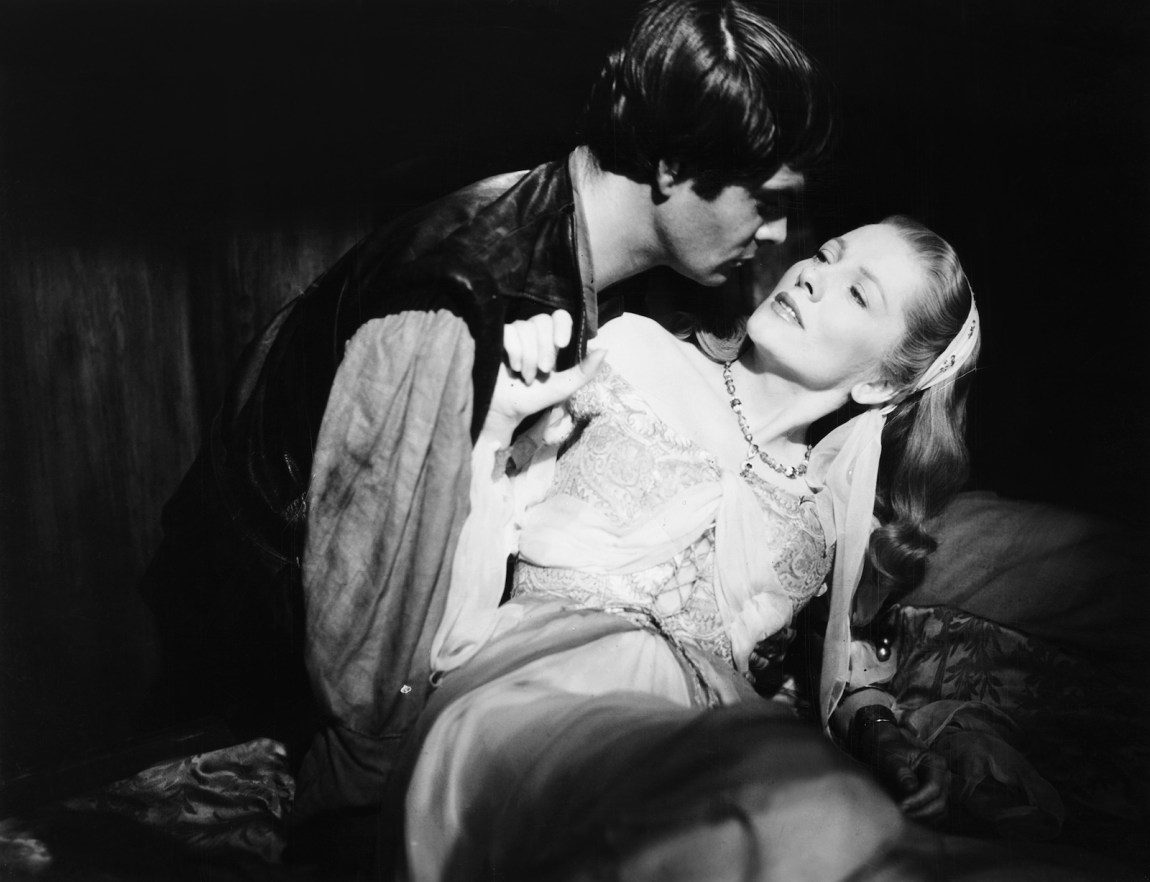Stopping to see an old friend en route to California on horseback, the protagonist of Saddle Tramp (1950), a folksy ranch hand played by Joel McCrea, announces that he’s “just passing through.” The same could often be said of the film’s Argentine-born director, Hugo Fregonese, who spent his professional life in a near-constant state of movement. Over the span of four decades, he made movies in Argentina, the United States, Italy, England, West Germany, and Spain. Ehsan Khoshbakht, the codirector of the annual Cinema Ritrovato festival in Bologna, and Dave Kehr, a curator in MoMA’s Department of Film, have taken Fregonese’s itinerancy to heart in their altogether fresh, revelatory selection of his films, which first screened in Italy this past summer as “Hugo Fregonese, Il Vagabondo” and is now playing at MoMA as “Hugo Fregonese: Man on the Run.”
The theme of migration suits Fregonese. His career led from an aesthetically ambitious but cash-strapped Argentine movie industry to Hollywood—where he traversed the fault lines of the studio system making a string of B-movies, from Westerns and crime pictures to melodramas—then to far-flung cities across Europe, and eventually back to Argentina. Fregonese’s work demonstrates the economy of style and efficiency, the ability to get more out of less, characteristic of someone trained in the assembly-line production of the studio era. His peripatetic trajectory, meanwhile, gave him an extraordinary versatility and adaptability in multiple national film industries.
The child of immigrant parents from Treviso, Italy, Fregonese was born in 1908 in Mendoza and attended primary and secondary school in Buenos Aires, where he started his university studies in economics. He quickly ditched academia for a freelance career as a newspaperman and sports journalist, and in 1935 he went to New York City to learn English and continue his studies at Columbia University. Not long after establishing residency on the East Coast, he took off for Hollywood, where he did an early stint as the technical advisor on an ultimately unrealized film called Way of a Gaucho—a title that anticipates the many restless wanderers who would come to populate his movies.
In 1939 he returned to Argentina, where he worked as an editor, an assistant director, and finally as a director of documentary shorts and narrative features. The earliest film in “Man on the Run” comes from this period. Apenas un delincuente (Hardly a Criminal, 1949) is a taut drama that establishes the visual and thematic terrain that he would retrace in his subsequent American pictures: carefully composed shots of urban crime and corruption, glittering nightlife, venal money worship, physical and psychological entrapment, and an existential quest for escape. An inveterate moviegoer, Fregonese had been weaned on the genre pictures of classical Hollywood, glimpses of which we catch in the personal style and sensibility that he developed in his own work. “If there was a film in which I was interested,” he said in an interview quoted by Santiago and Andrés Rubín de Celis in their survey of his career, “I went to see it every day, fifteen or twenty times.” The ultimate, autodidactic goal was to learn how movies were made.
After an extended stretch in the Argentine film industry, at Pámpa Studios and elsewhere, Fregonese returned once more to Hollywood, where he teamed up with the producer Leonard Goldstein and his B unit at Universal. Fregonese’s American directorial debut, One Way Street (1950), traffics in some of the familiar nocturnal scenes of urban alienation that saturate film noir. It features James Mason as Dr. Frank Matson, a morally conflicted physician mixed up with the mob and trying to outrun fate south of the border, with the loot and the boss’s moll (Märta Torén) in tow. There’s the usual genre-specific banter about dames and dough, much of it spouted by the noir standby Dan Duryea. But One Way Street dramatically shifts in tone when, in the second act, it relocates from the ominous shadows and rain-soaked streets of Los Angeles to the sun-dappled landscapes of a Mexican coastal village, where the refugee couple set up house—a fleeting sense of hope in an otherwise wretched universe.
While working in Hollywood, Fregonese changed studios even more frequently than he changed countries. He made My Six Convicts (1952), a prison drama filmed over nine days on location at San Quentin, for Stanley Kramer in collaboration with Columbia; and Blowing Wild (1953), a gripping black-and-white melodrama costarring Gary Cooper, Barbara Stanwyck, and Anthony Quinn, for Warner Bros. At Twentieth Century Fox in 1954 he directed both Man in the Attic—an adaptation of Marie Belloc Lowndes’s The Lodger nearly three decades after Hitchcock’s silent version, with Jack Palance delivering a sweaty, maniacal Jack the Ripper—and The Raid, another prison-break drama set during the Civil War, with Van Heflin as a Confederate POW out for revenge; a mercurial, hot-headed Lee Marvin as his unreliable sidekick; and the young, sympathetic Anne Bancroft as a war widow with a sturdy moral compass.
Advertisement
He reunited with Leonard Goldstein to make the unforgiving noir Black Tuesday (1954), from a script by Sydney Boehm, who also wrote The Raid. The film stars Edward G. Robinson as Vincent “King” Canelli, a mob boss on death row who, thanks to the aid of his old flame (Jean Parker), manages a prison break. One of the standouts in the series, it allows Fregonese to rekindle the spirit of pre-Code gangster glory that had reached a pinnacle in films like Little Caesar (1931), giving that film’s earlier star the opportunity to deliver one of his darkest, most brutal performances as he finds himself trapped by the cops in an infernal warehouse amid a pile of human wreckage. Stanley Cortez’s supple, sophisticated camerawork tests the harshness of Kodak’s new high-speed Tri-X film stock, which added a subtle grainy quality and visual depth to the picture.
Another highlight is the Technicolor Western Apache Drums (1951), made at Universal and recently given a 4K restoration. It attached Fregonese to the producer Val Lewton, who passed away just weeks before the film’s premiere, and gave him the opportunity to experiment more creatively with shadow and light. Some of the most stylish scenes were shot from inside a cavernous fortress in which the only light source is a candle. (The film also benefits from an evocative score by the studio’s Viennese émigré composer Hans Salter.) Blowing Wild, too, stands out for Stanwyck’s portrayal of a frosty femme fatale transported to Latin American soil. “I don’t care if they hang me,” she tells Cooper near the film’s denouement, as if to remind viewers of her indelible part in Double Indemnity (1944), “just so they hang you, too.”
The fate of the B-movie director, and the stigma that often came with it, sent filmmakers like Fregonese to shoot and produce movies overseas in the 1950s, when American studio money was growing scarce and European tax breaks made runaway productions, as they were aptly called, more attractive. The MoMA series offers prime examples of this trend. Fregonese shot the exteriors for his 1953 costume drama Decameron Nights—a garish, visually stunning omnibus of Boccaccio’s tales—in Franco’s Spain; the film, purportedly funded in part by the frozen assets of an American oil company, was distributed in the US by RKO. Seven Thunders (1957)—made at Pinewood Studios on the outskirts of London and shot on location in Marseille—follows a pair of British escapees from a prisoner of war camp in World War II, another occasion for Fregonese to depict the desperate search for freedom in a hostile, violent world.
Quite a few of Fregonese’s noirs, Westerns, and potboiler dramas were thought to be particularly well suited for rebroadcast on television in the 1970s and 1980s: they are, as the Cinema Ritrovato program notes have it, “small, unglamorous films with a punch.” The screener I watched of Saddle Tramp still had its “Saturday Movie” logo, which flashed up on the screen at certain intervals as if to announce its old format. Perhaps unsurprisingly, Fregonese has been mostly forgotten, or simply passed over, in the annals of film history. He gets a short capsule entry in Ephraim Katz’s exhaustive encyclopedia, and just a bit more space in David Thomson’s Biographical Dictionary of Film. Thomson notes the inevitable unevenness of Fregonese’s eclectic filmography, but insists that “at his best, Fregonese has that smoldering, grudging beauty that is characteristic of Boetticher and Ulmer—men who clung to Hollywood’s underbelly.”
Budd Boetticher and Edgar Ulmer were the sort of knockabout filmmakers relegated to the “expressive esoterica” section—for the “unsung directors with difficult styles or unfashionable genres or both”—of Andrew Sarris’s 1968 auteurist bible, The American Cinema. Fregonese, evidently, did not make the cut, but he surely belongs there. One of the few Latin American filmmakers of his generation to make inroads in Hollywood, he had a rough-hewn aesthetic and an offbeat career that complement and broaden the scope of the directors prized by Sarris.
As was the case with Ulmer, Boetticher, and other more marginal midcentury American filmmakers, it took French critics, programmers, and cineastes to rediscover and rehabilitate Fregonese’s work. In 2003, sixteen years after Fregonese’s death, Jacques Lourcelles prepared a retrospective, “Homage à Hugo Fregonese,” at the Cinémathèque Française and the Amiens International Film Festival. Introducing Fregonese on that occasion, Lourcelles characterized him as an artist of considerable talent whose fine films, then as now, were considered “a bit of a secret” among cinephiles. Two decades later, thanks to Khoshbakht and Kehr, we have the chance to cast a curious eye on a neglected oeuvre and rediscover a few gems in the process.
Advertisement





